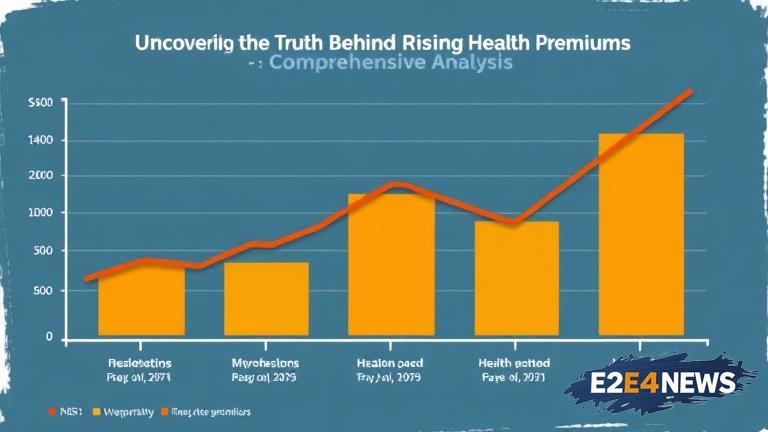The recent surge in health premium increases has left many individuals and families struggling to afford healthcare. While some may point to a single culprit, the reality is that multiple factors are at play. One major contributor is the rising cost of healthcare services, including hospital stays, doctor visits, and prescription medications. As medical technology advances and the demand for healthcare services grows, so do the costs. Another significant factor is the increasing prevalence of chronic diseases, such as diabetes and heart disease, which require ongoing treatment and management. The growing aging population also plays a role, as older adults tend to require more healthcare services. Furthermore, the rising cost of healthcare personnel, including doctors and nurses, is also driving up premiums. Additionally, the impact of inflation on healthcare costs cannot be ignored, as the cost of living continues to rise. The COVID-19 pandemic has also had a lasting impact on the healthcare system, leading to increased costs and a shortage of healthcare workers. The consolidation of healthcare providers and insurers has also led to reduced competition and higher prices. Moreover, the increasing cost of administrative tasks, such as billing and insurance claims, is also being passed on to consumers. The lack of transparency in healthcare pricing has also made it difficult for consumers to make informed decisions about their care. The role of pharmaceutical companies and their pricing strategies has also been called into question. Some argue that the high cost of prescription medications is a major driver of premium increases. Others point to the impact of government policies and regulations on the healthcare industry. The Affordable Care Act, for example, has had a significant impact on the healthcare landscape, but its effects on premium costs are still being debated. As the healthcare landscape continues to evolve, it’s essential to consider the complex interplay of factors driving premium increases. By understanding these underlying factors, policymakers and industry leaders can work towards developing solutions to make healthcare more affordable and accessible. The need for transparency and accountability in healthcare pricing is also crucial, as consumers have a right to know what they’re paying for. Ultimately, addressing the root causes of premium increases will require a multifaceted approach that involves stakeholders from across the healthcare industry. By working together, we can create a more sustainable and equitable healthcare system that prioritizes the needs of patients and families. The time for action is now, as the rising cost of healthcare continues to burden individuals and families. It’s essential to stay informed and engaged in the conversation about healthcare reform, as the future of our healthcare system depends on it. The impact of premium increases on low-income families and individuals is particularly concerning, as they often struggle to access basic healthcare services. The importance of preventative care and early intervention cannot be overstated, as these strategies can help reduce healthcare costs in the long run. By investing in preventative care and promoting healthy lifestyles, we can work towards reducing the burden of chronic diseases and improving overall health outcomes. The role of technology in healthcare is also evolving, with telemedicine and digital health platforms offering new opportunities for cost savings and improved access to care. As we move forward, it’s essential to prioritize innovation and collaboration in the healthcare industry, while also ensuring that the needs of patients and families remain at the forefront.





